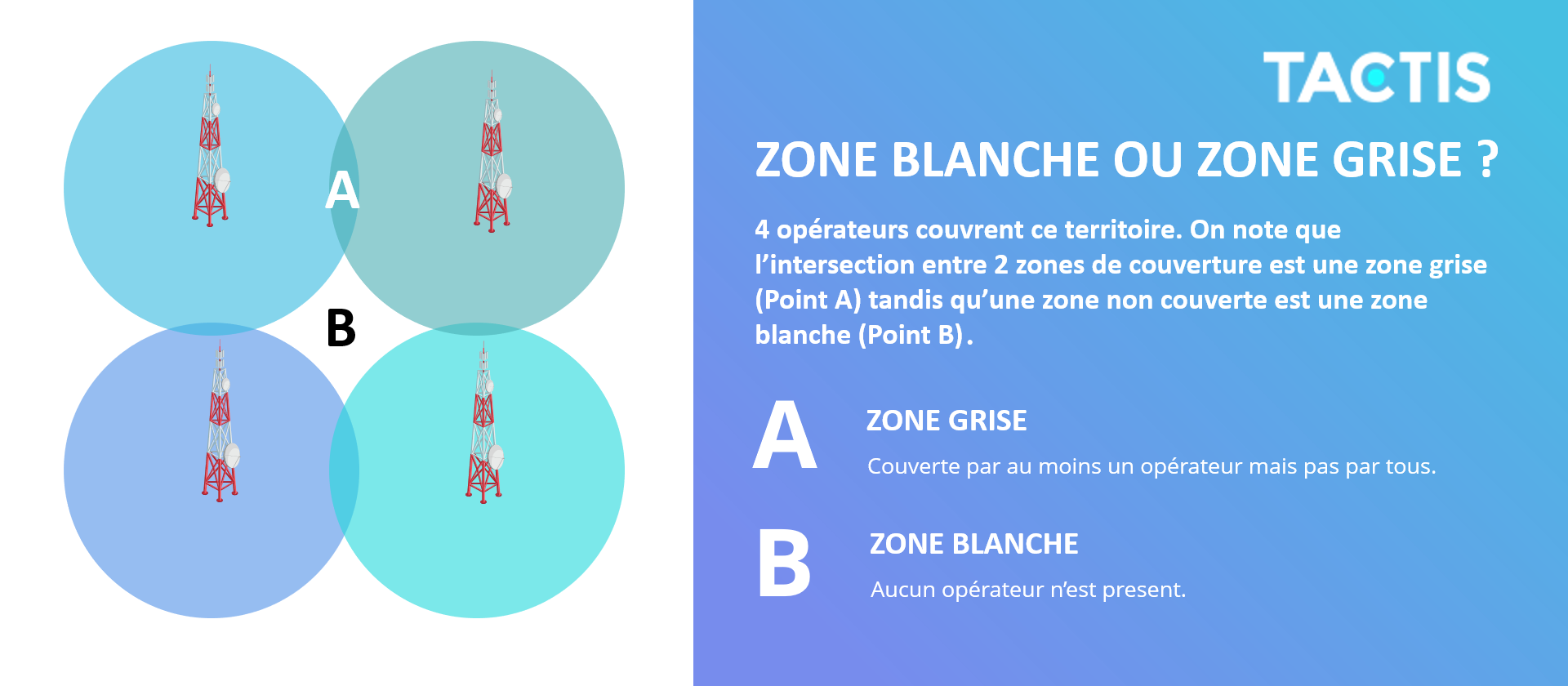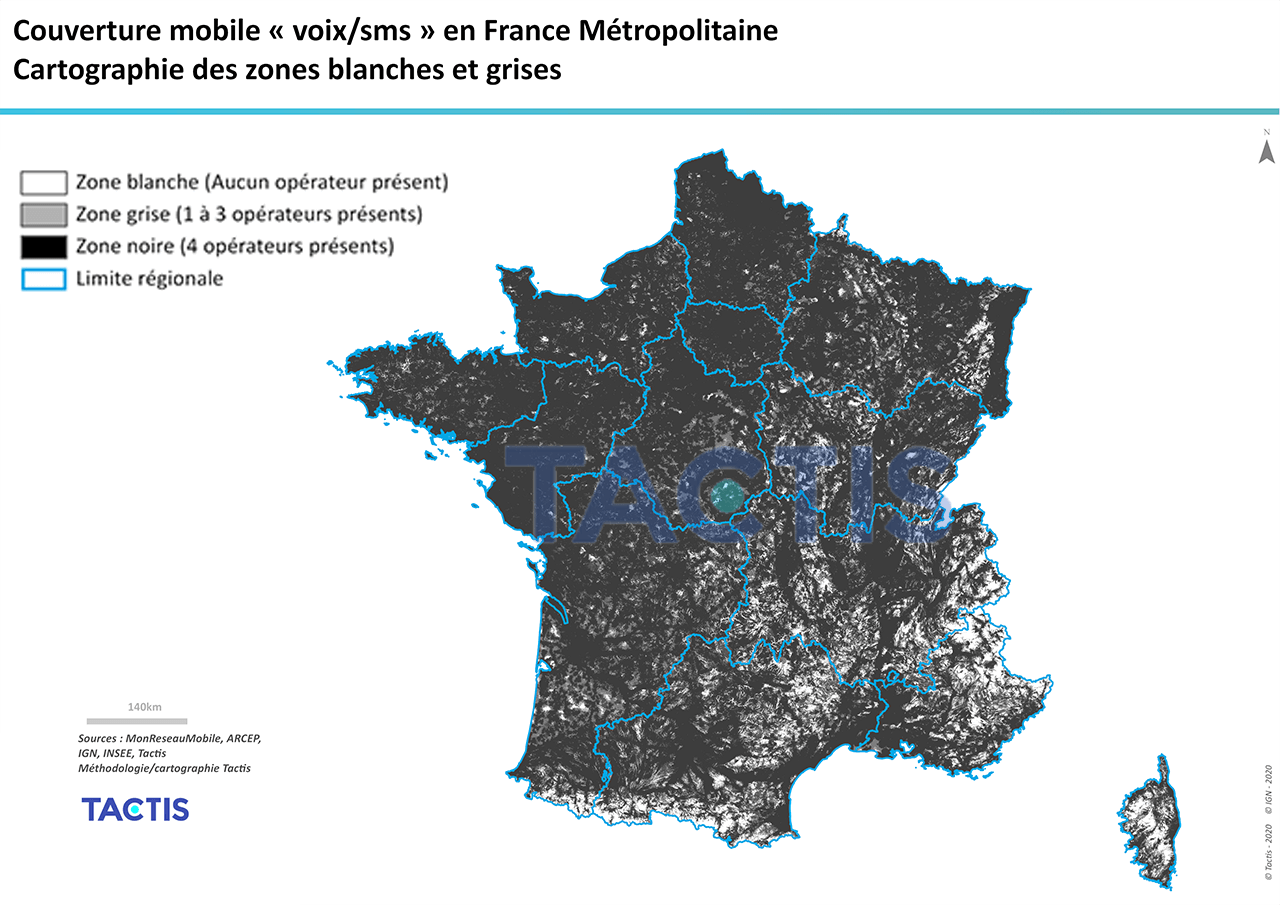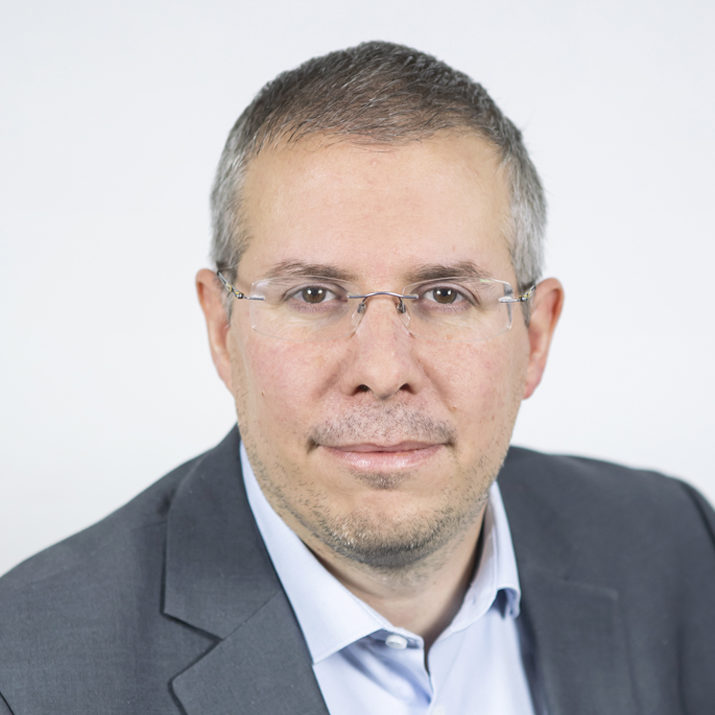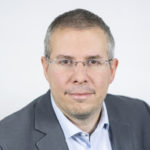What is a dead zone?
A dead zone is an area without mobile phone networks. It is therefore an area where it is impossible to make or receive calls, share data, or connect to the internet, regardless of your mobile operator.
It is also possible to speak of a 2G, 3G or 4G white zone if the area is not covered by any of the mobile operators in a particular technology (a 4G white zone is not covered in 4G by any operator, but can be covered in 3G or 2G by one or more operators).
What is a gray zone?
Unlike white zones, a gray zone is an area covered by at least one mobile operator, but not all of them. Gray zones are therefore a direct result of competition between multiple operators.
It should be noted that a gray zone is always white for a customer whose subscription is with the operator that does not provide coverage.
Just as white zones exist within a particular technology, it is also possible to talk about gray zones within a particular technology.

What about indoor coverage?
Historically, Arcep's obligations only apply to the exterior of buildings. Therefore, the interior of certain buildings, if there are no specific devices ensuring indoor coverage, can be considered a white or gray area.
Why don't all operators provide the same coverage in the same location?
Uniform and complete coverage, from all operators, of all parts of a territory, does not exist, because that would mean that all operators emit the same waves, in the same places, from the same height, at the same power, and that there are no obstacles hindering, or even preventing, the propagation of the waves.
Three main factors can explain the existence of areas of poor coverage:
- Competition through infrastructure
The policy of the French government and regulators in the digital sector is to prioritize competition through infrastructure. This means that operators compete not only in offerings to their customers, but also in the infrastructure required for the transmission points they own, build, or lease. Thus, operators are not all located in the same location across the country, which means they do not all cover the same areas.
Special cases and exceptions to this principle exist; they are detailed below in the chapter on ways to address areas of poor coverage.
- Different Coverage Between Operators
As we have seen, operators do not broadcast from the same locations. However, even if they were at the same high point, the antennas of different operators would not necessarily be in the same locations (e.g., due to differences in height), nor would they have the same characteristics or engineering choices (antenna manufacturer, antenna tilt, azimuth, etc.).
Also, a difference of a few meters, a more or less significant inclination, or a different azimuth will produce slightly different coverage between the two operators, and therefore produce areas where one operator's coverage will be better than that of another.
Added to these differences is the fact that operators do not all broadcast on the same frequencies (for example, in 4G, one could broadcast in the 1800 MHz band, and the other in the 2600 MHz band). Since wave propagation depends on the frequency band used, the use of different frequency bands can also explain different coverage between operators.
- Impossibility of placing towers everywhere
To cover an area, a transmission point is required, located on a high point (for example, a tower).
However, operators cannot simply install pylons wherever they want in the country: they must in particular respect town planning rules or protected areas (protection of remarkable monuments, military or sensitive zones, natural parks, etc.), certain areas are also difficult to access (mountains) or make the propagation of waves very complicated (forest areas).
Finally, particularly for health reasons, more and more elected officials, sometimes under pressure from a certain segment of the population, are opposing the installation of antennas in their territories, which is causing coverage gaps and uncovered areas where operators cannot install their antennas.
Since when have we been talking about white zones and gray zones?
White zones have existed since the first mobile phone networks were open to the public, i.e., the early 1990s, and gray zones since there was more than one national operator, i.e., roughly the same years.
However, until mobile phone use became widespread, these notions of white and gray zones were not critical, and it was understood that networks could not cover the entire territory.
The first realization, particularly by public authorities, that better coverage of the territory was needed came with the work that led to the first program aimed at reducing white zones in 2003, with the aim of covering all town centers in all municipalities in Metropolitan France (see below).
It was then the desire and need of users to be connected everywhere and all the time, with the advent of smartphones, and particularly the first iPhone in 2007, that gave rise to the notion of uncovered areas of the country. Today, it is expected that we can be connected everywhere, all the time, and it is no longer conceivable that certain parts of the country are not covered.
What is the proportion of uncovered areas in metropolitan France?
It is commonly accepted that uncovered areas represent less than 1% of the population, covering an area of approximately 10% of the country.
However, since the end of 2017, operators have been required to publish coverage maps for voice/SMS services, distinguishing between different levels of coverage:
- Very good coverage: You should be able to make calls and exchange text messages outside buildings and, in most cases, inside buildings.
- Limited Coverage: You should be able to make calls and exchange text messages outside buildings in most cases, but probably not inside buildings.
Since this date, "limited coverage" areas are also considered to no longer count in carrier coverage statistics, and therefore count as areas not covered by the carrier.

The map above represents the overlap of the "very good coverage" and "good coverage" areas of the four operators. The clearer the areas, the fewer operators there are to cover them.
It can be seen that the uncovered areas are mainly concentrated in certain departments that are difficult to cover, particularly in mountainous areas (Alps, Pyrenees, Massif Central, and Corsica).
How can we address white and gray areas?
The presence of white and gray areas across the country, although inherent to mobile networks, is not inevitable. Solutions exist to reduce them, whether regulatory solutions, solutions in the hands of operators, or more local solutions.
- Regulatory Solutions
The French Postal and Electronic Communications Code already encourages passive sharing of facilities where possible, i.e., grouping the transmission points of all operators on the same medium.
However, as we have seen, grouping them on the same medium is not enough to address these issues, and, moreover, it is not possible to share all mediums (structure, footprint, sharing methods, etc.).
Public authorities, particularly Arcep, have also implemented plans to eliminate dead zones since 2003:
- The first program, launched in 2003 and called the "Dead Zones – Town Centers Program," consisted of providing mobile phone, SMS, and very high-speed mobile internet services to more than 3,500 town centers in French municipalities that had no mobile coverage during censuses carried out in 2003, 2008, 2015, 2016, and 2017.
- Then, in January 2018, operators made commitments to Arcep and the Government to accelerate mobile coverage in metropolitan areas: this is the New Deal Mobile. Among these commitments is the "targeted coverage program," which aims to significantly and locally improve coverage in areas identified by local authorities and the government. This represents a major change in methodology compared to the previous program, as it involves the identification of areas directly by local authorities. By the end of this program, each operator will have ensured coverage of 5,000 currently under-covered areas through new sites, some of which will be shared.
- Operators' actions
Being able to route customer calls, wherever they are, contributes to the operator's reputation and market positioning.
Also, due to their natural deployments, to expand their network coverage, operators are the primary actors in reducing dead zones and gray zones. Thus, and this more specifically concerns gray zones, an operator that does not cover a certain area, while one or more of its competitors do, can naturally explore the possibilities of covering this area in order to also attract customers.
- And overseas territories?
When it comes to deploying mobile networks, overseas territories face similar issues to those in mainland France. However, they also have specific characteristics: different operators, specific obligations, smaller market sizes that do not necessarily benefit from metropolitan competitive dynamics, network maintenance in more difficult geographic and weather conditions, etc.
Due to these specific characteristics, the regulatory programs are not implemented overseas. Therefore, local initiatives, carried out in consultation with operators, are primarily used to reduce the number of black and gray areas. A preliminary assessment of the mobile coverage of the area in question (drive-tests, simulations) can be useful to better understand local challenges.
- "Local" Solutions
Even though indoor coverage is not mandatory, more and more people are complaining of not being able to receive signal at home or in their offices. For these specific cases, solutions exist, to be implemented by individuals (devices such as "femtocells", 4G repeaters, etc.) or on a larger scale, for businesses (devices such as DAS – Distributive Antenna Systems).
What is Tactis' expertise in white zone issues?
Tactis works with regulators, telecommunications operators, manufacturers, governments and local authorities, developers, and urban planners on issues related to frequency usage, license allocation, infrastructure sharing, the establishment of a coverage observatory and quality of service measurement, the qualification of white zones, the implementation of extended coverage in rural areas, In Door connectivity, etc.
In this context, Tactis can assist all local authorities in assessing their territory's coverage, particularly as part of the New Deal Mobile.
To support this support, Tactis will be able to use the ATOLL propagation simulation software, which is a benchmark in coverage modeling and simulation and radio network deployment. Tactis is the only project management assistance firm specializing in digital planning issues to have access to and be trained in the use of this key software for fixed and mobile coverage modeling.
Sources: Tactis, Arcep

Julien Renard
For more information
Hello, do you have a question about white zones or gray zones? Need clarification or clarification regarding a potential mobile coverage mission? Send an email to Julien Renard, Tactis radio expert.

